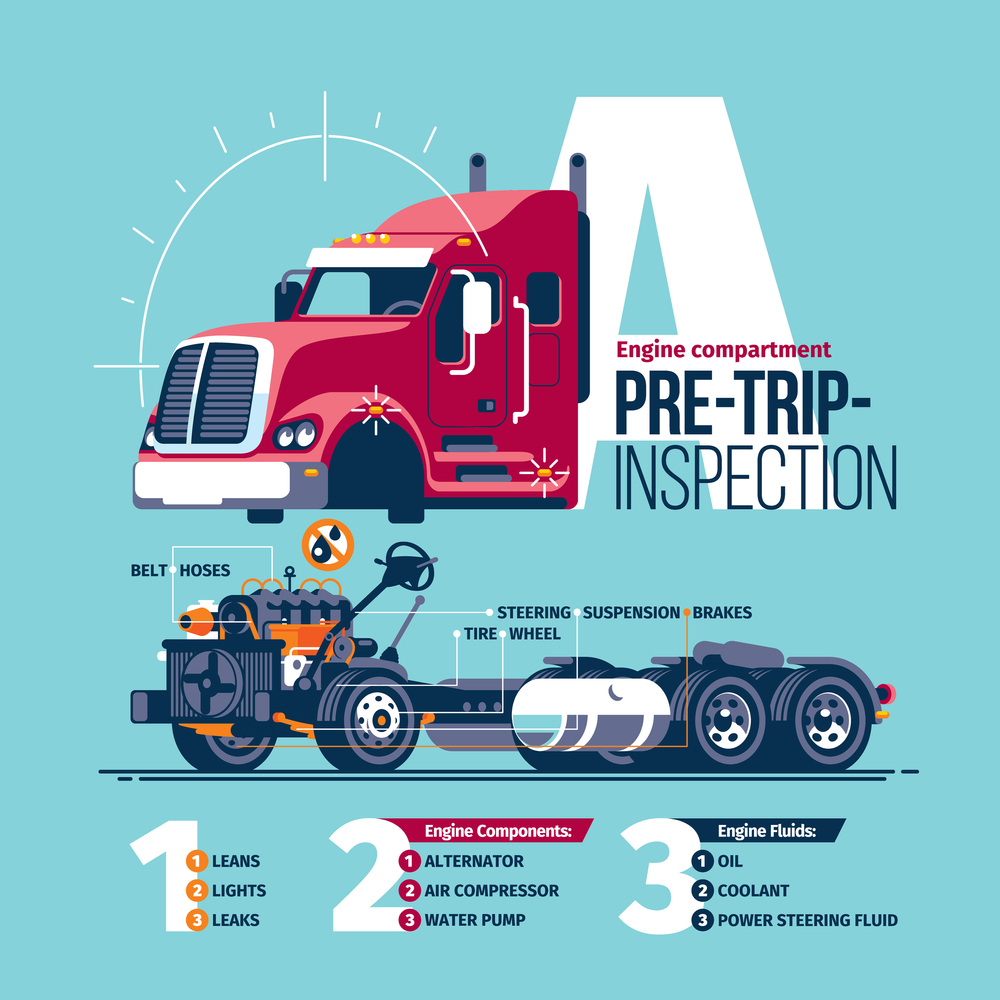When you’re new to the world of truck driving, there are a lot of things to learn and remember. One of the most crucial aspects that should never be overlooked is the pre-trip inspection. This process might seem tedious, but its importance can’t be overstated. It helps ensure safety on the road, not only for the driver but also for other motorists. Here’s an in-depth look at why pre-trip inspections matter and what newbie truck drivers should look for.
Why Pre-Trip Inspections Matter
The primary reason pre-trip inspections are essential is safety. Trucks are large, heavy vehicles that can cause significant damage if they’re not in proper working order. Overlooking a small mechanical issue could lead to a serious accident on the highway.
Moreover, pre-trip inspections are legally required. The Department of Transportation (DOT) mandates that all commercial drivers perform these inspections before hitting the road. Failure to do so can result in hefty fines and penalties, including suspension of your commercial driver’s license.
Lastly, conducting pre-trip inspections can save you time and money in the long run. Catching potential issues early can prevent costly repairs and downtime later on. It’s much more efficient to address small problems before they escalate into major ones.
What to Look For During Pre-Trip Inspections
Pre-trip inspections involve checking many different components of your truck. While the specific elements you need to inspect can vary depending on the type of truck you’re driving, here are some general areas that every truck driver should check:
Exterior Checks
1. Tires: Check the tire pressure, and look for any signs of wear or damage like cracks, bulges, or bald spots. Don’t forget to inspect the sidewalls too.
2. Lights and Reflectors: Ensure all lights and reflectors are clean, functional, and free from damage. This includes headlights, taillights, turn signals, and brake lights.
3. Mirrors and Windows: Mirrors should be clean and properly adjusted to provide a clear view. Check windows for cracks or other damage.
4. Fuel and Oil Levels: Check your fuel and oil levels. Running out of fuel or oil on the road can cause serious problems.
Interior Checks
5. Brakes: Test your service brakes as well as the parking brake. Listen for any unusual noises when the brakes are applied.
6. Steering Mechanism: The steering wheel should turn smoothly without resistance. Look for signs of excessive play.
7. Horn: Ensure your horn works properly. It’s a crucial tool for communicating with other drivers on the road.
8. Safety Equipment: Verify that you have all necessary safety equipment, including fire extinguishers, warning triangles, and first aid kits.
Mechanical Checks
9. Engine: Look for signs of leaks, cracks, or other damage. Check the belts for tightness and wear.
10. Fluid Levels: Check the levels of all vital fluids, including brake fluid, power steering fluid, coolant, and windshield washer fluid.
11. Battery: Inspect the battery for signs of corrosion. Make sure it’s securely mounted.
12. Air Lines and Brake Hoses: Check for cracks, leaks, or other damage.
Remember, this is just a basic guide. The specific pre-trip inspection process can vary depending on the type of truck you’re driving and the cargo you’re carrying. Always follow the guidelines provided by your employer or the DOT.
In conclusion, pre-trip inspections are an essential part of being a responsible, professional truck driver. They help ensure the safety of everyone on the road and can save you time and money in the long run. So, before you hit the road, take the time to thoroughly inspect your vehicle. It’s worth it.

